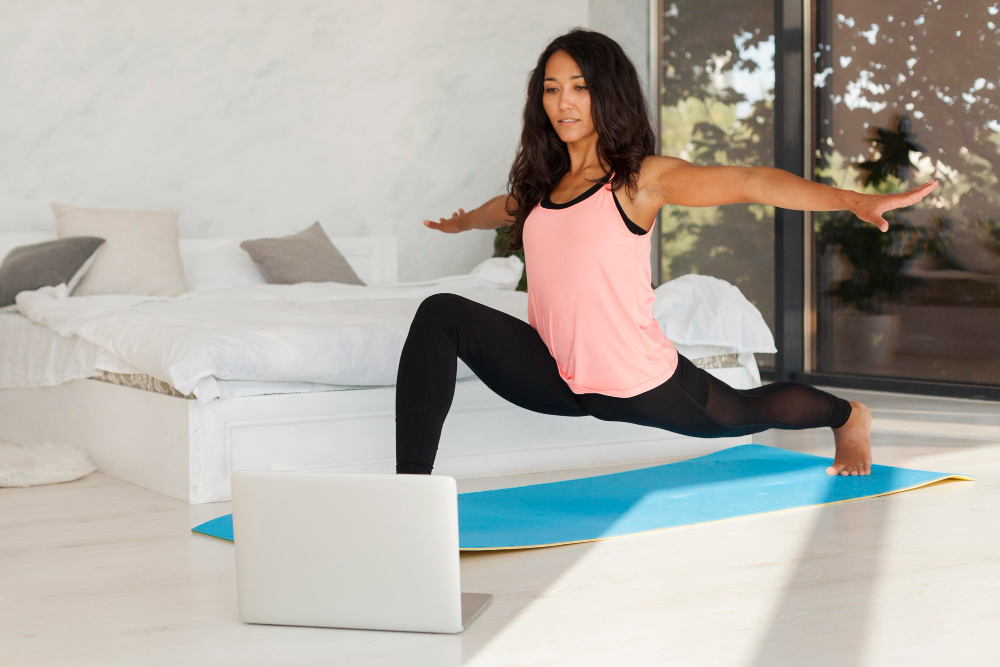5 Seated Meditation Positions to Try

Finding the proper position is crucial for maintaining focus and comfort when starting your meditation practice. This blog post explores five effective meditation poses that cater to various needs and flexibility levels.
Whether you’re a beginner or looking to enhance your meditation experience, these positions will help you establish a solid foundation for your practice.
Why Your Seating Position Matters
The position you adopt during meditation significantly influences your ability to relax and concentrate. A comfortable posture alleviates physical strain, allowing your mind to remain still. Ideally, your meditation pose should support your back, align your spine, and reduce the burden on any muscle group.
1. Full Lotus Position (Padmasana)
How to Do It:
- Sit on your mat with your spine erect.
- Place your right foot on your left thigh and your left foot on your right thigh.
- Keep your hands on your knees with your palms facing up.
- Ensure your knees touch the ground and your head is directly over your hips.
Benefits:
- Stabilizes the body and straightens the spine.
- Reduces muscle strain and deepens relaxation.
Considerations:
It is not suitable for those with knee or ankle issues.
2. Half Lotus Position (Ardha Padmasana)
How to Do It:
- Begin in a seated position with a straight spine.
- Place your right foot on your left thigh and keep your left foot beneath your right thigh.
- Rest your hands on your knees with palms facing upwards.
Benefits:
- Easier on the knees than the full lotus.
- Helps develop good posture and focus.
Considerations:
Alternate the foot on top each time you meditate to balance the body’s flexibility.
3. Seated with a Chair
How to Do It:
- Sit on a chair with your feet flat on the floor.
- Keep your back straight, and do not lean against the back of the chair.
- Place your hands on your thighs or your knees.
Benefits:
- Ideal for those with limited flexibility.
- Supports the back and allows you to maintain a straight spine.
Considerations:
Choose a chair without arms if possible to allow more natural placement of your hands.
4. Burmese Position (Sukhasana)
How to Do It:
- Sit with your legs crossed at the shins.
- Both feet should rest below the opposite thigh or knee.
- Hands should rest on your knees or in your lap.
Benefits:
- It’s less intense than lotus positions.
- Suitable for long meditation sessions as it reduces pressure on the legs.
Considerations:
Use a cushion or mat for added comfort.
5. Kneeling Position (Vajrasana)
How to Do It:
- Kneel on a mat or cushion with your knees together.
- Sit back on your heels and place your hands on your thighs.
- Keep your spine straight and your head up.
Benefits:
- Excellent for those who find sitting positions uncomfortable.
- Helps keep the spine aligned and promotes serene meditation.
Considerations:
It may be hard on the knees for some people, so a cushion for support is recommended.
Incorporating Props for Enhanced Meditation
Ports such as cushions, mats, or meditation benches can enhance comfort and improve posture. These supports help adjust the body’s angles and distribute weight evenly, allowing you to sit longer and more comfortably.
Conclusion
Exploring these meditation poses can profoundly impact your practice by enhancing your comfort and concentration. Try out these positions, and don’t hesitate to use props to find what best suits your body’s needs. We encourage you to share your experiences and this post with others looking to deepen their meditation practice.
Additionally, explore our guided meditation sessions to refine your technique further and achieve greater mindfulness. Engage with us in the comments below, or check out our other resources for more insightful content.
Adopting these meditation poses ensures that your body supports rather than distracts from your meditative practice. These positions will become second nature with regular practice, promoting a healthier, more focused meditation routine.
Remember, the right pose can significantly affect your meditation effectiveness, so consider these options carefully and choose what feels best for you.
Read More:
Best Meditation Positions
Related Posts

Excel in Online Yoga Classes

Achieving Radiant Skin with The Hot Yoga Glow
About Us


